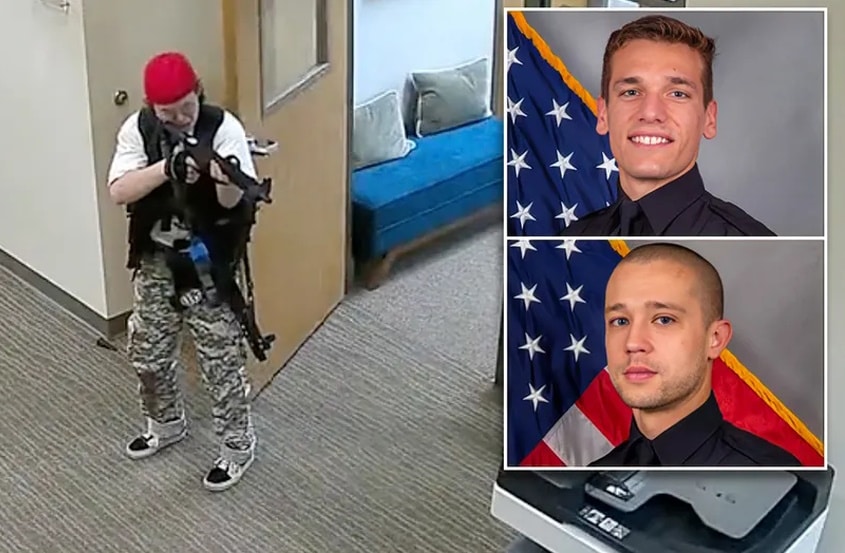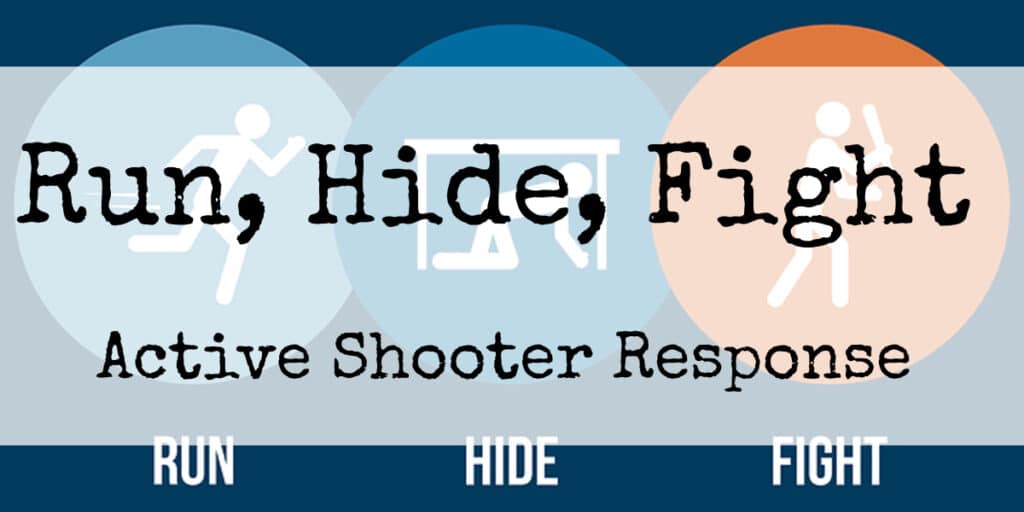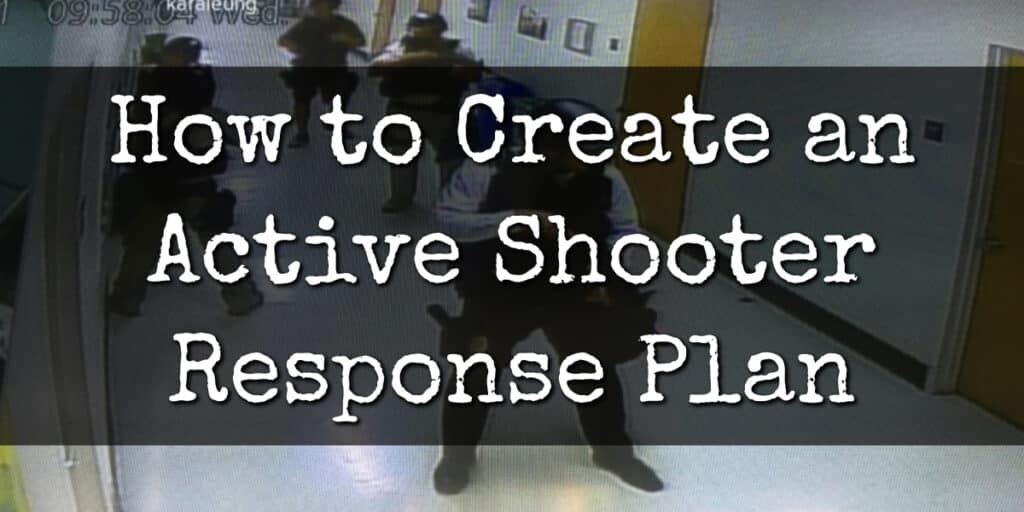As the threat of active shooter incidents continues to grow, it is more important than ever for organizations and individuals to be prepared to respond to such an event. By understanding the active shooter phenomenon and implementing prevention strategies, we can work towards reducing the risk of these devastating incidents and minimizing damage and casualties.
In this article, we will explore the key strategies that can be employed to prevent and respond to active shooter incidents.
On This Page:
Understanding the Active Shooter Phenomenon
Before we can adequately prepare for active shooter incidents, it is important to understand what an active shooter is and what they might look like. An active shooter is an individual who is actively engaged in killing or attempting to kill people in a confined and populated area. They may use a variety of weapons and can be motivated by a range of factors, including personal grievances, ideologies, or mental health issues. It is important to note that active shooters can come from all walks of life, and no one is truly immune to this threat.
Defining an Active Shooter
An active shooter is an individual who is currently engaged in killing or attempting to kill people in a public space. They may be armed with firearms, knives, bombs, or other weapons. In most cases, the shooter is acting alone, although occasional situations with multiple shooters do occur. The motive behind an active shooter incident can vary from personal grievances, political or ideological beliefs, or mental health problems.
It is important to note that not all active shooter incidents are the same. Some may involve a single shooter, while others may involve multiple shooters. The weapons used may also vary, from firearms to knives to bombs. It is important to be prepared for any type of active shooter incident.
Common Characteristics of Active Shooters
While it is difficult to predict who might become an active shooter, there are some common characteristics that have been identified in past incidents. These can include a history of mental health problems, a history of disciplinary issues at school or work, a fascination with guns and violence, and a sense of isolation or perceived victimization.
It is important to note that not all individuals who exhibit these characteristics will become active shooters. However, if you notice someone exhibiting these behaviors, it is important to report them to the proper authorities.
Recent Active Shooter Incidents
In recent years, there have been numerous high-profile active shooter incidents that have captured the nation’s attention. These include shootings at schools, workplaces, and public spaces. Some of the most devastating events include the Sandy Hook Elementary School shooting in 2012, the Pulse nightclub shooting in 2016, and the Las Vegas shooting in 2017. While these incidents are rare, they are a clear reminder of the importance of being prepared to respond to an active shooter event.
It is important to note that active shooter incidents are not limited to the United States. In fact, there have been numerous incidents around the world, including in Europe and Asia.
Preventing Active Shooter Incidents
While it is impossible to completely prevent active shooter incidents, there are steps that individuals and organizations can take to reduce the risk. These include:
- Encouraging a culture of reporting concerning behavior
- Providing mental health resources for employees or students
- Conducting regular active shooter drills
- Implementing security measures, such as metal detectors or security cameras
- Providing training on how to respond to an active shooter event
By taking these steps, individuals and organizations can be better prepared to respond to an active shooter event and reduce the risk of a tragedy occurring.
The Importance of Preparedness and Prevention
Preparedness and prevention are key components of mitigating the risk of active shooter incidents. By taking proactive steps to reduce risk and prepare for a potential event, organizations and individuals can help to minimize the potential damage and loss of life.
Active shooter incidents have become a major concern in recent years, with numerous high-profile incidents occurring in schools, workplaces, and other public spaces. While it is impossible to completely eliminate the risk of such incidents, there are steps that can be taken to reduce the likelihood of an event occurring and to minimize the potential impact if an incident does occur.
Reducing the Risk of Active Shooter Events
There are several strategies that organizations and individuals can employ to reduce the risk of an active shooter event occurring. One important strategy is to implement physical security measures, such as installing security cameras, alarms, and access control systems. These measures can help to deter potential attackers and provide early warning in the event of an incident.
Another important strategy is to conduct background checks on employees and other individuals who may have access to sensitive areas or information. This can help to identify individuals who may pose a risk of violence or other forms of misconduct and to take appropriate steps to mitigate that risk.
Finally, providing mental health resources and support to those who may be experiencing mental health issues can also help to reduce the risk of an active shooter event. Mental health issues are a common factor in many active shooter incidents, and providing resources and support to those who may be struggling can help to prevent incidents from occurring.
Minimizing Casualties and Damage
In the event that an active shooter incident does occur, it is important to have a plan in place to minimize casualties and damage. This can include training employees or members of an organization to respond quickly and effectively to an incident, establishing communication protocols, and designing safe spaces and escape routes.
One important aspect of minimizing casualties and damage is to provide first aid and medical care to those who are injured. This can involve training employees or other individuals in basic first aid techniques, as well as ensuring that medical supplies and equipment are readily available in the event of an incident.
Another important strategy is to establish clear lines of communication between individuals and groups within an organization, as well as with local law enforcement and emergency responders. This can help to ensure that information is shared quickly and accurately and that all parties are able to coordinate their efforts effectively.
Enhancing Emergency Response Capabilities
In addition to planning for potential incidents, it is important to have strong emergency response capabilities in place. This can involve coordinating with local law enforcement and emergency responders to ensure that they are familiar with the layout of a facility or other location, as well as conducting regular drills and training exercises to help individuals and organizations prepare for potential incidents.
It is also important to ensure that all necessary equipment and supplies are readily available in the event of an incident. This can include items such as first aid kits, communication devices, and emergency lighting and power sources.
Recognizing and Reporting Warning Signs
One of the key components of preventing active shooter incidents is recognizing and reporting warning signs. By encouraging a culture of reporting and implementing threat assessment teams, organizations, and individuals can work together to identify potential threats and intervene before a situation escalates.
It is important to note that recognizing and reporting warning signs is not a foolproof method of preventing active shooter incidents, but it is an important step in promoting safety and security.
Behavioral Indicators of Potential Active Shooters
There are several behavioral indicators that may suggest that an individual is at risk of becoming an active shooter. These can include a fascination with guns and violence, statements or gestures suggesting violent intentions, and a sense of isolation or victimization.
It is important to understand that these indicators do not necessarily mean that an individual will become an active shooter, but they may warrant further investigation and intervention.
Encouraging a Culture of Reporting
It is important to encourage a culture of reporting and to create an environment where individuals feel comfortable reporting potentially concerning behavior. This can include providing anonymous reporting channels and ensuring that there are no repercussions for individuals who report their concerns.
Furthermore, it is important to educate individuals on what types of behavior should be reported and how to report them. This can include providing training on recognizing warning signs and reporting procedures.
Implementing Threat Assessment Teams
Threat assessment teams can be used to identify potential risks and intervene before a situation escalates. These teams can include individuals with expertise in behavioral health, law enforcement, and security, among others.
Threat assessment teams can also be used to assess potential threats and develop strategies to mitigate those threats. This can include implementing security measures, providing support to individuals who may be at risk of becoming an active shooter, and working with law enforcement to monitor potential threats.
Developing an Active Shooter Response Plan
Having a robust active shooter response plan in place is critical to minimizing damage and casualties in the event of an incident. A well-developed plan will include coordinating with local law enforcement and establishing communication protocols, among other components.
Coordinating with Local Law Enforcement
Working closely with local law enforcement is critical to a successful response to an active shooter incident. This should include establishing clear lines of communication and ensuring that everyone involved is aware of their role in the response plan.
It is important to establish a good working relationship with local law enforcement before an incident occurs. This can include inviting them to participate in drills and training sessions, as well as regularly communicating with them to ensure that they are up-to-date on any changes to the response plan.
When an incident does occur, it is important to follow the lead of law enforcement and let them take charge of the situation. They will have the expertise and resources necessary to handle the situation, and it is important to avoid interfering with their efforts.
Establishing Communication Protocols
Establishing clear communication protocols is essential in the event of an active shooter incident. This can include utilizing emergency notification systems and establishing a central communication hub for information sharing.
It is important to ensure that everyone involved in the response plan knows how to access and use these communication systems. Regular training and drills can help to reinforce this knowledge and ensure that everyone is prepared to use these systems effectively in an emergency.
It is also important to establish backup communication systems in case the primary systems are unavailable. This can include using cell phones or two-way radios as backup options.
Conducting Regular Drills and Training
Regular drills and training are essential for ensuring that everyone involved in an organization or facility is prepared to respond effectively to an active shooter incident. This can include training on evacuation procedures, communication protocols, and first aid.
It is important to conduct these drills and training sessions regularly to ensure that everyone is up-to-date on the response plan and that any new employees or personnel are properly trained. These sessions can also help to identify any gaps or weaknesses in the plan that need to be addressed.
During these drills and training sessions, it can be helpful to simulate different scenarios to ensure that everyone is prepared for a variety of situations. This can include scenarios where the shooter is in a different location or where there are multiple shooters.
Implementing Physical Security Measures
Physical security measures can help to reduce the risk of an active shooter incident occurring and can also help to minimize the potential damage and loss of life in the event that an incident does occur. It is important to implement these measures in a thoughtful and comprehensive manner in order to provide the greatest level of protection for individuals and organizations.
Access Control and Visitor Management
Access control and visitor management systems are critical components of a comprehensive physical security plan. These systems can be used to control entry and exit points and to screen visitors for potential threats. Utilizing security cameras, metal detectors, and other technologies can help to identify individuals who may pose a risk and prevent them from gaining access to a facility.
It is important to ensure that access control and visitor management systems are regularly maintained and updated in order to remain effective. This may involve conducting regular training sessions for security personnel and ensuring that all equipment is functioning properly.
Surveillance and Monitoring Systems
Surveillance and monitoring systems can be used to detect potential threats and to monitor activity in key areas. These systems can include motion sensors, video cameras, and other technologies that can trigger alerts if unusual activity is detected.
It is important to ensure that surveillance and monitoring systems are strategically placed and regularly maintained in order to provide the greatest level of protection. This may involve conducting regular assessments of a facility’s security needs and updating equipment as necessary.
Designing Safe Spaces and Escape Routes
Designing safe spaces and escape routes is another critical component of a comprehensive physical security plan. Safe spaces can include areas that are reinforced with bullet-resistant materials or that are otherwise designed to withstand an active shooter incident. Escape routes should be clearly marked and easily accessible, allowing individuals to quickly exit a facility in the event of an emergency.
It is important to involve all relevant stakeholders in the process of designing safe spaces and escape routes, including security personnel, facility managers, and other key personnel. Regular training and drills can also help to ensure that individuals know how to access safe spaces and escape routes in the event of an emergency.
Supporting Survivors and Communities After an Incident
In the aftermath of an active shooter incident, it is important to support survivors and communities as they begin to rebuild and recover.
Providing Mental Health Resources
Providing mental health resources and support for survivors and community members is critical in the aftermath of an active shooter incident. This can include providing counseling services and connecting individuals with resources in the community.
Rebuilding and Strengthening Community Resilience
Rebuilding and strengthening community resilience is an important part of recovering from an active shooter incident. This can include community events and activities, as well as programs designed to address the root causes of such incidents.
Learning from Past Incidents to Improve Future Preparedness
Finally, it is important to learn from past incidents in order to continuously improve and strengthen preparedness and prevention strategies. This can include analyzing incident reports and conducting post-incident reviews to identify areas for improvement.
Conclusion
Active shooter incidents are a growing threat, but with proper preparation and prevention strategies, we can work towards reducing the risk of such events and minimizing damage and casualties. By understanding the active shooter phenomenon, recognizing warning signs, and implementing robust prevention and response plans, organizations and individuals can play an active role in keeping our communities safe.



